April 14, 2023
Air Date: April 14, 2023
FULL SHOW
SEGMENTS
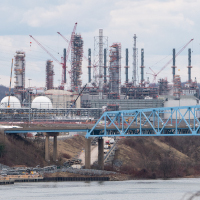
Cleaning Up Toxic Air
View the page for this story
The EPA is proposing to cut the amount of toxic air pollutants industrial sources are allowed to emit. The targeted chemicals include known carcinogens that have long contaminated communities in Appalachia and Louisiana’s “Cancer Alley.” Judith Enck, founder of Beyond Plastics and a former EPA regional administrator, joins Host Jenni Doering to discuss. (12:02)
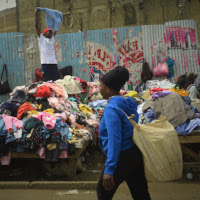
Used Clothes Pollute Global South
View the page for this story
In wealthy countries, cheap “fast fashion” clothing is often thrown away after being worn just seven or eight times. And while donating those clothes may feel like a good deed, they often end up as waste that pollutes developing countries. Veena Holkar, director of Wildlight Global, spoke with Living on Earth’s Bobby Bascomb. (08:40)
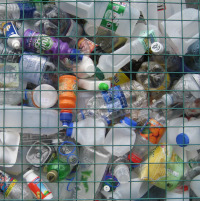
Hidden Plastic Waste
/ Joseph WintersView the page for this story
There are many sources of hidden plastic in the waste that wealthy countries send to the developing world, in clothing, tires, and electronics. Grist Reporter Joseph Winters joins Host Jenni Doering to discuss how all that extra plastic waste is affecting the environment and health of people in the Global South. (08:40)
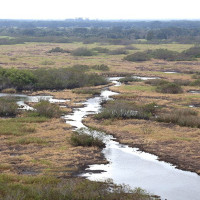
Beyond the Headlines
/ Peter DykstraView the page for this story
This week, Living on Earth contributor Peter Dykstra joins Host Aynsley O’Neill to share the rewilding of a river in the Florida Everglades. Plus, a study finds that the warming climate is creating better conditions for home runs in baseball. And in history, they mark the birthday of Aaron Burr, well known for his deadly duel with Alexander Hamilton. He also launched the first New York City water utility. (03:56)
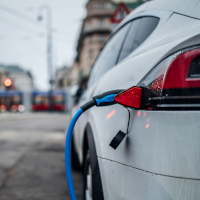
Revving Up U.S. EV Manufacturing
View the page for this story
The government offers a $7,500 tax credit to new car buyers to help meet a goal that 50% of all new vehicles sold in the U.S. should be electric by 2030. But to qualify, cars must now meet a new set of requirements. Auto reporter Jim Motavalli joins Host Jenni Doering to talk about how EV manufacturers are responding. (08:29)
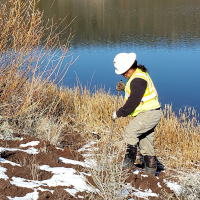
Replanting The Klamath River
/ Juliet GrableView the page for this story
Four dams are being torn down on the Klamath River, revealing land that’s been submerged for decades. Juliet Grable of Jefferson Public Radio reports that local tribes and partners are working to replant the area with native species. (05:11)
Show Credits and Funders
Show Transcript
230414Transcript
HOSTS: Jenni Doering, Aynsley O’Neill
GUESTS: Judith Enck, Veena Holkar, Jim Motavalli, Joseph Winters
REPORTERS: Peter Dykstra, Juliet Grable
[THEME]
DOERING: From PRX – this is Living On Earth.
[THEME]
DOERING: I’m Jenni Doering
O’NEILL: And I’m Aynsley O’Neill.
The Biden administration proposes strict new regulations for the chemicals that can be emitted by industry
ENCK: This regulation will be vigorously opposed by chemical manufacturers by fossil fuel companies and I think it's very reasonable to talk about this in the context of the war on cancer. Strong enforcement of this regulation should drive down some cancer incidents.
DOERING: Also, a new study finds plastic waste in donated clothing and tires is flowing from wealthy countries to the Global South.
WINTERS: I think it can add fuel to the fire for people who are saying that this is waste colonialism. The developing world shouldn’t bear the brunt of wealthy countries’ large and growing appetite for plastic products.
DOERING: That and more this week on Living on Earth – Stick Around!
[NEWSBREAK MUSIC: Boards Of Canada “Zoetrope” from “In A Beautiful Place Out In The Country” (Warp Records 2000)]
[THEME]
Cleaning Up Toxic Air
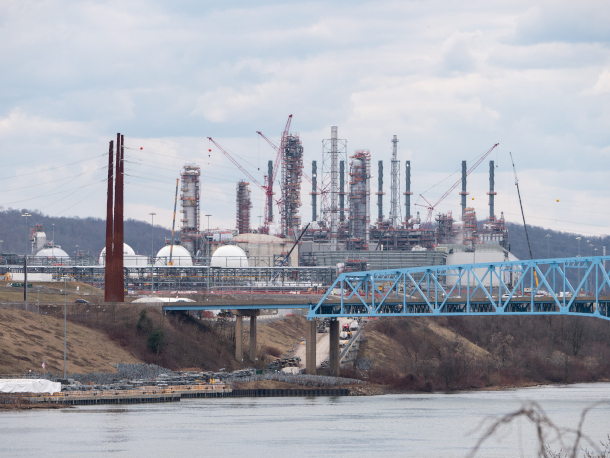
The massive Shell Ethane Cracker Petrochemical Plant in Beaver County makes plastic from locally fracked natural gas. The Environmental Integrity Project and Clean Air Council filed a notice of intent to file a lawsuit against the Shell cracker plant. They say the plant has violated the federal Clean Air Act and other environmental laws. (Photo: Mark Dixon, Flickr, NoPetroPA, CC BY 2.0)
O’NEILL: From PRX and the Jennifer and Ted Stanley studios at the University of Massachusetts, Boston, this is Living on Earth. I’m Aynsley O’Neill.
DOERING: And I’m Jenni Doering.
Much of our show today highlights the pollution consequences of plastic production, and as we were preparing for broadcast news broke of a massive industrial fire at a plastics recycling plant in Richmond, Indiana. The facility has had many safety violations in the past, with plastic waste piling up creating a fire hazard. A black plume of smoke carrying toxic chemicals from burning plastic has blanketed the area, creating serious health concerns from exposure to known carcinogens. Much like the East Palestine, Ohio train derailment that led to the burning of toxic chemicals, the Indiana event is top in the news cycle. But nearly every day the petrochemical industry emits some of the same hazardous air pollutants that officials are concerned about with these dramatic events. That’s why it’s significant that The Biden administration recently proposed a new regulation aimed at reducing hazardous air pollutants from petrochemical plants. If adopted, the EPA says the new rules will reduce the amount of toxic air pollutants released each year by more than 6,000 tons. Proponents say it would be a tremendous win for public health by reducing chemical exposure that leads to many cancers including lymphoma, leukemia, and breast cancer. The proposed rule would be especially beneficial for communities in Appalachia and Louisiana’s Cancer Alley, which are already burdened with dipropionate chemical exposure and associated health problems. For more I’m joined now by Judith Enck, founder of Beyond Plastics and a former EPA regional administrator. Welcome back to Living on Earth Judith!
ENCK: Thanks, Jenni, it's really good to be with you.
DOERING: What are these hazardous air pollutants that the Biden administration has proposed to address? Can you walk us through some of them and what we know about the negative health effects that are linked to?
ENCK: Sure. So this proposed regulation would cover over 200 industrial facilities. Places like factories that make plastics or oil refineries and EPA believes that they can cut the toxic air emissions of dozens of different air toxics. Some that they are particularly focused on are ethylene oxide that has been linked to lymphoma and leukemia. Second, they are looking at chloroprene, which is well known for being used at a facility in Louisiana called Denka and in 2016, EPA identified the area around that facility as having the highest cancer rates in the entire United States.
DOERING: Wow.
ENCK: EPA is also targeting 1,3-butadiene, which is causes lymphoma and leukemia, they're targeting benzene, ethylene dichloride and perhaps in my mind most importantly, they're targeting vinyl chloride. Vinyl chloride is linked to liver cancer and many other health problems. It was declared a human carcinogen in the early seventies and I'm particularly focused on vinyl chloride because it only has one use. It's the chemical that's used to make polyvinyl chloride plastic or PVC, plastic and there are alternatives to PVC plastic. So the question is, why take the risk of not just manufacturing so much vinyl chloride, knowing that it's a human carcinogen, but also transporting it? And some of your listeners may be thinking, oh vinyl chloride that's sounding familiar, it's because five of the rail cars that derailed in East Palestine, Ohio, contained vinyl chloride.
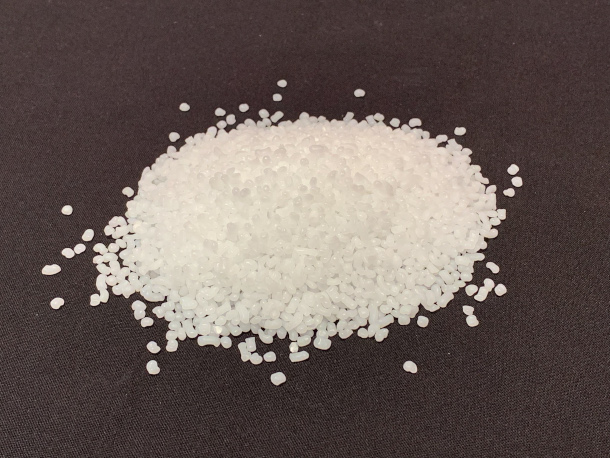
Plastic nurdles are the primary feedstock of plastic manufacturing. Nurdles are created by ethane cracker plants like the Shell facility north of Pittsburgh, PA in Beaver County. (Photo: Mark Dixon, Flickr, public domain)
DOERING: To what extent does this rule address the concerns about cumulative impacts from multiple sources of chemicals in a community?
ENCK: Well, for the very first time, this proposed regulation will consider a cumulative impacts when establishing what levels of air toxics can be released into the environment. Shockingly, that has not been done before. Typically, EPA would rely on a standard called maximum achievable control standards, or MACT. So if on paper, if that one smokestack, met the numerical requirements of the regulations, they would be issued a permit. But the profound failure of our national and state environmental regulatory program is not recognizing that there's often a polluting facility right next door, or down the road. And what I'm most encouraged by in this regulation is looking at cumulative impacts that's much closer to real life, because if you're living there or going to school there, you're breathing in these toxic air contaminants from a number of different facilities, not just one. So the cumulative impact provision is key. The other interesting part of this proposed regulation is the EPA will require companies to do something called fenceline monitoring. So monitoring air quality right at the border of the facility. What's a little disappointing is EPA is not doing it themselves, but they're telling the companies to do it and then EPA will make the data available to the public. So that's going to be a whole rigmarole that's going to take a really long time. And that would be one comment I have on this regulation, is that EPA should be able to do it. The company should pay for it because EPA doesn't have enough money but I would not necessarily trust the companies to do this on their own because if they find problems, I doubt they're going to self report.
DOERING: It's not exactly in the company's interest to disclose the full amount of emissions that they're releasing.
ENCK: Yeah, just like people who violate the speed limit don't go home and call the police department and say, hey, I was going 65 in a 55 zone. So we wouldn't expect that for most motorists, why would we expect this from industrial polluters?
DOERING: Now what about the fenceline communities that are exposed to these chemicals? Where are they located and how is their quality of life been impacted by them?
On February 28, the U.S. Department of Justice filed a lawsuit on the U.S. Environmental Protection Agency’s behalf, alleging that two companies are responsible for emitting a dangerous chemical, chloroprene, into the air in Louisiana’s ‘Cancer Alley.’ pic.twitter.com/hpamWuLYPV
— NowThis (@nowthisnews) March 3, 2023
ENCK: Well, people living downwind or right next to these petrochemical facilities have really suffered. And it's really unconscionable what we expect communities to put up with from these facilities. There are high cancer rates, their asthma rates, there are people who no longer plant gardens because they're worried about the soil contamination. When air toxics come out of smokestacks, the pollution comes down somewhere often on water. So air pollution becomes a water pollutant. And where these facilities are concentrated, are a particular problem. So for instance, along 130 mile stretch along the Mississippi River is an area called cancer alley, unfortunately, that's the name and that's where there are 200 industrial facilities, many will be impacted by this proposed regulation. There's a concentration of facilities in Texas, there's a concentration of facilities in Appalachia, Ohio, Pennsylvania, Kentucky. And I mean, it just seems like this is a giant science experiment that's going on in these communities and people are guinea pigs almost. And you know, the evidence is all around us. Many types of cancers are on the rise and we need to make sure that the public is really focused on this. And I think it's very reasonable to talk about this in the context of the war on cancer. Strong enforcement of this regulation should drive down some cancer incidents.
DOERING: So for now, this is just a proposal by the Biden administration. What are the next steps?
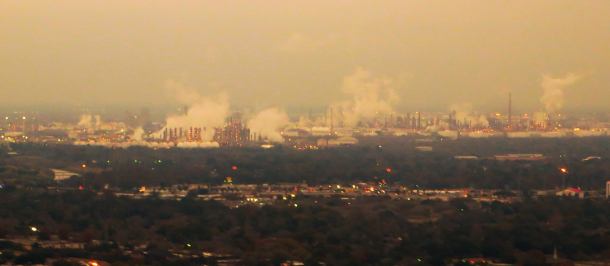
Petrochemical facilities in Houston–The Woodlands–Sugar Land Texas. According to Environment America, in 2021 the top two industries for carbon emissions in Texas were petrochemicals and plastics at 69%. (Photo: Ken Lund, Wikimedia Commons, CC BY SA 2.0)
ENCK: Well, there's a 60 day public comment period. So members of the public can go to epa.gov, and weigh in on what they think about this regulation. We already know it will be vigorously opposed by the chemical companies. In fact, the American Chemistry Council said that their members are committed to being good neighbors, and don't necessarily think these regulations are needed. Well, I don't think it's very neighborly to pump pollutants and carcinogens into your neighbor's yard. So I'm not so sure about that Good Neighbor commitment. But I think the chemical manufacturers, the fossil fuel companies, their first step will be to put in reams and reams of information to EPA as to why they should not do strong regulations. My guess is EPA would probably proceed and then my educated guess is that these companies will then sue to overturn the regulation. EPA gets sued more than any other federal agency. So they're represented by Department of Justice, there'll be ready for that. And then if the chemical lobby doesn't get their way in court, or at EPA, then they'll scurry over to Capitol Hill and try to get their friends in Congress to probably delay the regulation that's usually their playbook. And in the meantime, massive amounts of air toxics continue to get pumped into the environment.
DOERING: Yeah, so taking the long view, you know, EPA has been rolling out a number of proposed rules in recent weeks. There's a rule limiting PFAs in drinking water, those are forever chemicals, we call them sometimes, tighter limits on mercury from coal fired power plants, and this proposed rule for hazardous air pollutants like chloroprene and ethylene oxide and vinyl chloride. How can the administration make sure that they get this rule and those others over the finish line?
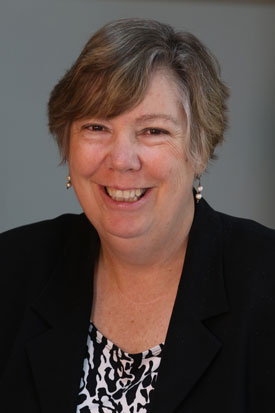
Judith Enck is founder and President of Beyond Plastics, Professor at Bennington College in Vermont and former Regional Administrator for Region 2 of the EPA. (Photo Courtesy of Judith Enck)
ENCK: Well, they have to move fast because as we know the outcome of presidential elections will determine whether regulations survive or not. The agency is still really reeling from four years of the Trump administration, when not only did the Trump administration not promulgate one particularly effective environmental protection regulation, but they actually attempted to repeal many. So EPA had to get those processes underway to reestablish older regulations and at the same time tackle issues like climate change, which are enormous and calls for a regulatory approach. So EPA still has to stay focused on what are the most pressing, environmental concerns that need to be addressed. That's why you see the PFAS regulations, this air toxics rule, the mercury rule coming out and whoever wins the next election I just hope and pray that they don't repeal these, so we're in this cycle of having to start all over again.
DOERING: Judith Enck is the founder of Beyond Plastics and a former EPA Regional Administrator. Thank you so much, Judith.
ENCK: Thanks, Jenni. Great to be with you.
Related links:
- Read the American Chemistry Council’s Statement on New EPA Clean Air Act Rulemaking for the Chemical Manufacturing Industry
- Learn more about the Biden Administration's Proposal to “Strengthen Standards for Chemical and Polymers Plants, Dramatically Reduce Cancer Risks from Air Toxics”
- CNBC | “Biden EPA Cracks Down on Mercury Pollution from Power Plants”
- The New York Times | “Biden Administration to Curb Toxic Air Pollutants from Chemical Plants”
- Louisiana Observer | “School Board Aware of EPA’s Recommendation to Relocate Fifth Ward Elementary Students”
- Legal Defense Fund | “FAQs and Environmental Conditions of St. John the Baptist Parish Public Schools”
- Houston Public Media | “A Petrochemical Company Wants to Expand in Houston’s East End. The City Says Air Pollution Levels Are Already Too High”
- WESA | “In Beaver County, Shell Flares Burn Bright After Equipment Malfunction at Ethane Cracker”
[MUSIC: Herbie Hancock and Wayne Shorter, “Hale-Bop Hip-Hop” on 1+1, by Wayne Shorter, Polygram Records]
O’NEILL: Our next Living on Earth Book Club event on April 26th at 7 p.m. Eastern features “Soil: The Story of a Black Mother’s Garden” by Camille Dungy. It’s a free event - sign up at loe dot org slash events.
[MUSIC: Herbie Hancock and Wayne Shorter, “Hale-Bop Hip-Hop” on 1+1, by Wayne Shorter, Polygram Records]
O’NEILL: Coming up – How the old clothes you donate can wind up choking rivers and causing health problems in the Global South. That’s just ahead on Living on Earth.
ANNOUNCER: Support for Living on Earth comes from Sailors for the Sea and Oceana. Helping boaters race clean, sail green and protect the seas they love. More information @sailorsforthesea.org.
[CUTAWAY MUSIC: Lucas & Arthur Jussen, “Laideronnette, Impératrice des Pagodes (For Piano 4 Hands)” from Ma mere l’Oye by Maurice Ravel, Recorded in the Concertgebouw in 2020]
Used Clothes Pollute Global South
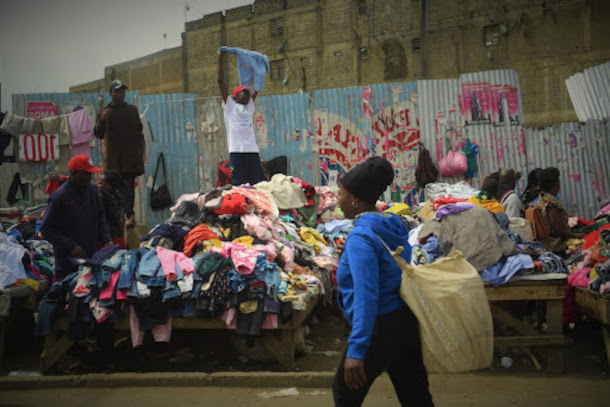
Market traders at Gikomba Market in Nairobi sell their wares. The second-hand clothing market directly employs roughly two million people in Kenya. (Photo: Courtesy of Changing Markets Foundation and Clean Up Kenya)
DOERING: It’s Living on Earth I’m Jenni Doering
O’NEILL: And I’m Aynsley O’Neill.
With warmer weather on the way and fashion brands unveiling their summer designs, it might be tempting to buy cheap, trendy clothes off the rack. But while they may be kind to your wallet, these “fast fashion” items are far from easy on the Earth. One study found that the average person bought 60% more clothes in 2014 than they did in 2000, but kept each item for half as long. And researchers find some low-cost clothing is thrown away after being worn just seven or eight times. Rather than throw clothes in the trash many people will donate unwanted items to thrift stores and that’s when the problem begins for many countries in the global south that receive the donated clothing. That’s according to a recent study commissioned by the Changing Markets Foundation. For more we called up Veena Holkar director of Wildlight Global. She conducted field work in Kenya for the report and spoke with Living on Earth’s Bobby Bascomb.
BASCOMB: So your investigation marched through what happens to used clothing, looking at Kenya as a destination. Why Kenya?
HOLKAR: We made a shortlist and we ended up going to Kenya because there's open access customs data for Kenya, which means that we could actually examine the data and see the names of companies that were shipping used clothing into Kenya and we could see the names of the companies that were receiving it. It's by no means the case that all used clothing is going to Kenya; it's going all over the world. Kenya is one place that we can actually have a close up look and see what's happening on the ground.
BASCOMB: So let's say you have a t-shirt that you don't want anymore, maybe your child has outgrown it. You take it to your local thrift store. What happens to that shirt that it somehow makes its way to Kenya, or one of the many, many other countries that take our used clothing?
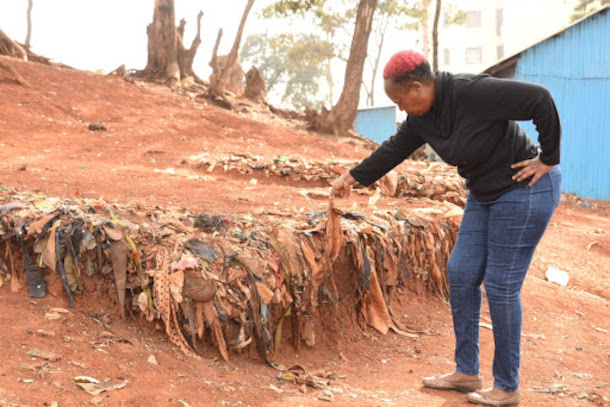
Textile waste embedded into the soil surrounding a dumpsite in Kawangware. Unlike natural fibers like cotton or linen, synthetic fibers do not decompose. (Photo: Courtesy of Changing Markets Foundation and Clean Up Kenya)
HOLKAR: You take your t-shirt to the thrift store. If it's good enough quality to be resold, they'll put it out on the shop floor and it will get resold. If it's not quite good enough quality for that, they'll take it round the back and put it in a bag to be sorted. It will then be picked up by a recycling company, a commercial recycling company who will pay for it. And they'll sort through that clothing and they may then sell some of that. The stuff which they think isn't quite good enough will then be shipped abroad. Now it will go to a number of different countries predominantly in the Global South.
BASCOMB: And so what happens to that t-shirt once it arrives in Kenya?
HOLKAR: The ships arrive in Mombasa port, the large bales taken out and put in warehouses, and then they're sold on to middlemen. And eventually they make their way to the large undercover markets in the centers of the big cities. The one that we visited was in Nairobi, that's the biggest one of all. And at that point, the clothes in the bales are bought by secondhand market traders. The second hand market trader won't have any idea that t-shirt is even sitting inside of the bale they've just bought because they're not allowed to look at the contents of the bale before they buy it. They have to hand over their dollars and they will buy sight unseen around about 200 items of clothing. They'll cut the bale open, and that's the point where they discover whether or not they have got a decent amount of clothes in there that they can resell, or whether a large proportion of that clothing is going to be waste that they're going to be losing money on. And some of the traders that we spoke to do end up losing money, substantial amounts of money on some of the bales. It's basically a lottery. So let's assume that they've cut open the bale and they found your t-shirt in there. They'll have a look at it and they will try and assess whether or not they can recoup some of the purchase money on it. If it's in bad condition, by which I mean–and I saw plenty of t-shirts like this–stained or torn, covered in dog hair, covered in mud, completely misshapen and stretched, or perhaps a tiny little crop top t-shirt, which is completely inappropriate for Kenyan people, if it's that kind of t-shirt, then they will put it to one side. And at the end of the day, there will be a fagia trader who will come to the store and buy all of these items which were unsellable which were all in this pile at the back of the store, and they'll buy them for a very small amount of money. They will then take them away and see if they can sell them for point naught five of a cent even, miniature, tiny amounts of money. The likelihood is that they won't be able to sell it. They may then burn that clothing, they may throw it into the ground next to their store, which becomes a compacted mass of used clothing that's been discarded there. They may throw it into the river; we saw rivers completely choked with used clothing that had been discarded there. The problem in Kenya– and it's not specific to Kenya–is that the sort of infrastructure for disposing of refuse and waste is completely overburdened by the amount of waste that we're shipping over there. They can't cope with it, their waste systems can't cope with it.
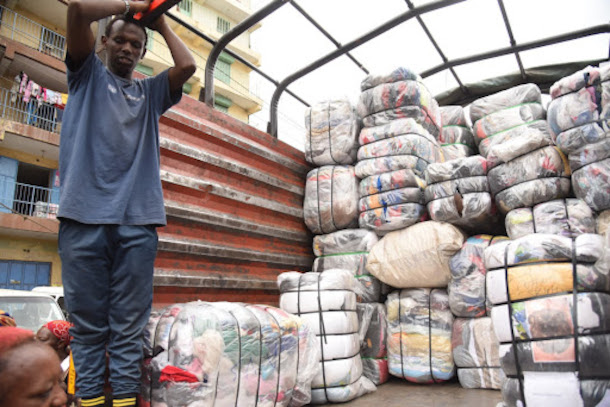
Clothing bales being loaded onto a truck at Gikomba. Second-hand clothing traders are not allowed to look inside the bales until after they have purchased them. (Photo: Courtesy of Changing Markets Foundation and Clean Up Kenya)
BASCOMB: So much of our clothing is actually made of plastic. So it's not like we're just throwing cotton into a river or into a municipal waste site that could decompose. We're throwing, essentially, plastic, which is never going to decompose. I could see how this problem could really add up very quickly.
HOLKAR: In 2021, over 900 million items of used clothing was thought to have been exported to Kenya and that's based on our customs data. Of that, approximately half, so 450 million items were waste, and about two-thirds of that was composed of synthetics. So that's more than 300 million items of clothing in one year of waste which was synthetic. Now those clothes as you correctly say are discarded but do not disintegrate or decompose naturally. They remain in the soil for many, many years and also in the water supply which they contaminate. And if they're burned, they're far more dangerous because the smoke that they give off is extremely harmful to humans and we've had reports of people being constantly admitted to hospital because of problems caused by burning of used clothing.
BASCOMB: And is the used clothing burned just as a way to get rid of it so it's not clogging up your rivers anymore, or is it actually used as some sort of fuel?
HOLKAR: Both of those happen. So it is used in some cases, just simply because there's no other way to get rid of it and it's accumulating in vast heaps all over the place. The used clothing is also sometimes used as fuel. We heard reports that used clothing was being sold to industry soaked in oil to be used as the basis for fuel. And we saw with our own eyes, some people at the edge of the market who were making peanuts, making salted peanuts for sale, and the fires that they were using to roast their peanuts on were fueled by scraps of waste clothing, including we filmed, synthetic clothing. So they were breathing in, directly breathing in the toxic fumes that that clothing was given off as it was burned.
BASCOMB: Well, this is–sounds like a public health hazard that–that we are shipping to the developing world.
HOLKAR: Exactly so. It's unconscionable to me that we're not dealing with this problem ourselves, but actually sending it somewhere else to a country where it can't be dealt with. Even if they could deal with it the volumes are so vast, it's absolutely impossible.
BASCOMB: And I understand that you spoke to local people who are involved in the trade and maybe just living alongside of it. What did they have to say about this issue?
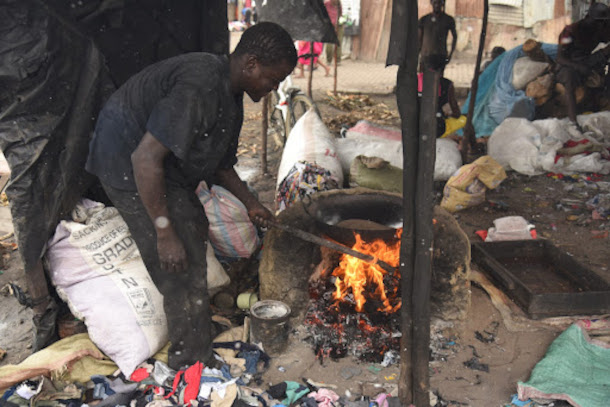
A peanut roaster using clothing scraps for fuel in Kongowea. Investigators spoke to peanut roasters who were frequently hospitalized for respiratory problems, presumably from the chemicals coming off the burning synthetics. (Photo: Courtesy of Changing Markets Foundation and Clean Up Kenya)
HOLKAR: We spoke to market traders, we spoke to people in the communities living alongside the markets and alongside the river. And the general perception was that this is too much. It's too much for them to manage. It's too much to be coped with and it's causing health problems and environmental problems. Everybody was in agreement about that. The traders, whilst they welcome secondhand clothing, and by no means want the trade to stop, begged to have clothing which was usable that they could use and resell. And they were hard pushed to understand why the global north is sending clothing which is completely useless and unwearable.
BASCOMB: So what can people do to not contribute to this problem? What advice do you have for our listeners who want to, you know, make better choices?
HOLKAR: The first thing I'd say is buy less, buy better. Secondly, I would say, think about the labels of your clothes. Check them and see what things are made of and try and buy clothing which is not made of synthetic fibers. The third thing to understand is that you as an individual are not just a consumer, you're also a citizen. And you can take an active role in shaping this debate. You can talk to brands, you can put pressure on brands and write letters to them, and ask for their commitments on transparency and their commitments on sustainable sourcing and production of their materials and ask which companies have a clear plan to phase out their dependence on synthetic fibers and buy clothing from those companies.
O’NEILL: Veena Holkar is Director of Wildlight Global, she spoke with Living on Earth’s Bobby Bascomb.
Related links:
- Read the full report from Changing Markets and Clean Up Kenya here
- Watch the short documentary from Changing Markets and Clean Up Kenya here
- Treehugger | “Fast Fashion Has a Serious Plastic Problem”
- BBC | “Can Fashion Ever Be Sustainable?”
[MUSIC: The Flechters, “African Safari” on African Folk Music Instrumental,by Derek and Brandon Flechter, available on Youtube]
Hidden Plastic Waste
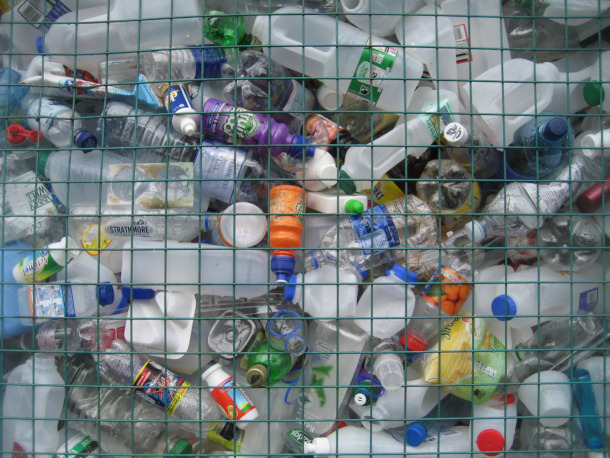
A new analysis claims that the UN could be underestimating the international plastic waste trade by up to $1.8 million metric tons. (Photo: Mike Carney, Flickr, CC BY-NC-ND 2.0)
DOERING: As we just heard, donated clothing is one way that plastic has become a burden in the global south where it is shipped for reuse but often ends up as waste. And there are many other sources of hidden plastic in the waste being shipped abroad including tires, paper, and electronics. Those less obvious sources of plastic waste aren’t included in the United Nations’ estimate of the international plastic waste trade. A recent study by the International Pollutants Elimination Network found that the UN is underestimating the amount of plastic waste being shipped to developing countries by up to 1.8 million metric tons, making totals about 40% higher than previously thought. Joseph Winters has been following the story for Grist. He’s also a former Living on Earth intern. Joseph, welcome back!
WINTERS: Thanks so much for having me.
DOERING: So what categories of plastic are usually included in the old kinds of calculations? And what types of waste are typically ignored? Why are we missing out on huge categories of plastic waste here?
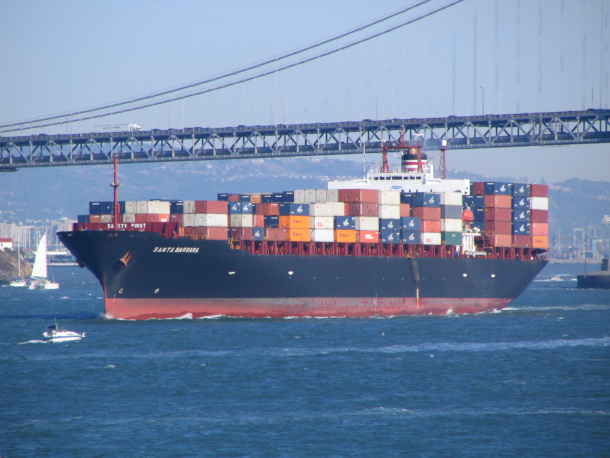
Many developed nations will send their plastic waste overseas to poorer countries. (Photo: Derrell Licht, Flickr, CC BY-ND 2.0)
WINTERS: So the way that many researchers try to quantify the amount of plastic waste that's being traded between countries uses this UN database. And in this database, plastic waste, things that you would think are obviously plastic, like bottles or plastic wrappers, things like that, they get their own code, their own category, and they're counted separately from all the other kinds of waste. And so researchers tend to look only at that category when they're making calculations about the international waste trade. And they fail to look at other categories. And so what the researchers did is they looked at a couple of these specifically around clothing. So discarded clothing gets a different code in this UN database, and it's not counted as plastic waste, it's counted as clothing waste, even though the researchers cite data showing that 60 to 70% of all textiles are made of some kind of plastic. So that's all your like synthetic fabrics. And that's not being captured by researchers. There's another category of used clothing that's sent abroad, and it's not considered waste at all. So this is clothes that wealthy countries send to the developing world thinking, oh, it's going to be recycled, it's going to be reused in a secondhand market or something like that. So that's not captured as waste at all, even though again, 60 to 70% of those textiles are made of plastic, and 40% of them likely end up in landfills, because it's just unsalvageable. It's too worn or too used.
DOERING: So in addition to clothing waste not being counted, what else is there?
WINTERS: The other big category that the researchers looked at was paper. So countries send big bales of paper waste abroad to be hopefully recycled. But it turns out that a lot of plastic sneaks into those bales. So those could be wrappers, or I guess, bottles, other plastic waste that just contaminates the bales. And the estimates for the amount of contamination in paper bales vary widely. But the report cites two sort of extremes. On the lower end, it could be just 5% of paper bales are actually plastic contamination. But the estimates go all the way up to 30%. So it could be that almost a third of these paper bales are actually plastic that's not being captured by estimates of the total international waste trade.

Although 60-70 % of clothing contains plastic, it is not traditionally considered plastic waste. (Photo: Bella Ella Boutique, Flickr, CC BY-SA 2.0)
DOERING: That's huge. Yeah, sometimes junk mail, it's an envelope, it's paper, but it's, there's also plastic stuff in there. I imagine that could be contaminating it, too.
WINTERS: Yeah, there are just lots of ways for plastic to get into paper bales.
DOERING: Yeah, I mean, plastic is in just almost everything we use these days. Are there any other categories that really are being missed here?
WINTERS: Yeah, there's a number of other categories that the report said were hard to quantify, but are still likely very problematic. And those include e-waste. So all of the electronics that countries throw away and send to the developing world are laced with plastic and other problematic components. They also talk about rubber, so largely from tires that are discarded and sent abroad. And then there's another category called Refuse Derived Fuel. It's a kind of fuel that has a lot of plastic in it.

Another category of plastic waste that is often overlooked is e-waste, or discarded electronics that contain plastic. (Photo: Marco Assini, Flickr, CC BY-SA 2.0)
DOERING: So China, which used to receive much of our plastic waste, actually stopped accepting recyclable waste from other countries in 2018, under what was called the Operation National Sword. Which countries are now bearing the brunt of this burden?
WINTERS: Yeah, so after the National Sword Policy passed in China, countries in the developing world like in Latin America, in Southeast Asia, they begin increasing their plastic imports. There's data from the Basel Action Network, which quantifies the international plastic waste trade showing that these imports have increased, in particular in places like Indonesia, Vietnam, Malaysia, the Philippines, Turkey, and many countries in South America.
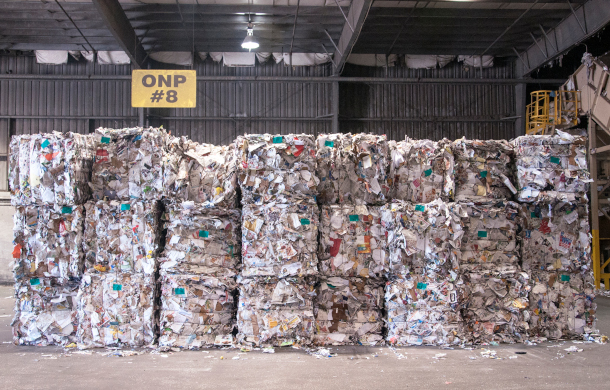
Paper bales, which richer countries send overseas to be recycled, can be contaminated with plastic. (Photo: Chris Bentley, Flickr, CC BY-NC-ND 2.0)
DOERING: Well, developed countries that are sending this waste elsewhere often claim that they're recycling that material overseas. But that's not always the case, right? What happens to the plastic waste that doesn't get recycled?
WINTERS: Unfortunately, most of the world's plastic waste is never recycled. When it's not recycled, it's either incinerated, so burned, or sent to a landfill, or in a sort of worst case scenario, it's just dumped directly into the environment, or into a sort of uncontrolled dumping site.
DOERING: And why should we care about this? I mean, what risks does plastic waste pose to human health and the environment?

When developed nations send plastic waste to developing countries like Indonesia, it is often incinerated or dumped directly into the environment. (Photo: Basel Action Network, Flickr, CC BY-NC-ND 2.0)
WINTERS: Yeah, plastic poses a number of health risks to people and risks to the natural world, especially in some of those disposal methods that are that are not recycling. So a lot of the risks come from the fact that plastic is made from fossil fuels and includes thousands and thousands of chemicals, many of which are hazardous to human health. So when plastics are incinerated, those chemicals are released into the air as airborne pollution, which puts people at greater risk of cancer, lung disease, things like that. When plastics are landfilled or dumped in an uncontrolled site, those same chemicals can leach into the soil or the groundwater, contaminating the food that people eat, or the water that they're going to drink. There are also risks from plastic just by virtue of it being plastic. Plastic breaks down over time into smaller and smaller fragments known as microplastics that have wide ranging yet poorly understood consequences for the environment and people's health. Some people are concerned that microplastics attract microbes and other pathogens onto them, serving as sort of concentrators for those bad things. And then, when fish or small organisms eat them, they can be impacted. If they're part of the human food chain, meaning they're a fish or another animal that humans like to eat, then those pathogens can be introduced into the humans.
DOERING: So pathogens, viruses, bacteria, and, of course, all of those PFAS chemicals and phthalates and PCBs that some plastics contain.
WINTERS: Yeah, there are just a huge array of risks related to plastics and our over reliance on them.
DOERING: Well, so maybe now this report helps us perhaps calculate plastic waste a little bit better. So that's great that we have more awareness of the issue, hopefully. But what can we actually do about this problem? How can we deal with this massive crisis of plastic waste? And what is the way forward here?

Plastics contain thousands of harmful chemicals that can leach into soil and groundwater. (Photo: Oregon State University, Flickr, CC BY-SA 2.0)
WINTERS: What I hear again, and again, from environmental advocates, and scientists and policy experts, is that we need to stop focusing so much on downstream solutions. So yes, while it's important to clean up pollution that's already out there, the focus should be on what they call turning off the plastic tap. So the analogy that's always drawn is that if you consider plastic production as the spout in a bathtub, this bathtub is filling up at a rapid rate. It's overflowing, in fact. And so before we can really drain the bathtub, we have to turn off the tap. We have to limit plastic production. People are calling for a cap on global plastic production to be enforced by a global plastics treaty that's being negotiated right now as part of the UN process.
DOERING: Yeah. I was wondering to what extent might this more accurate calculation of how much plastic waste is getting shipped to developing countries, how might that influence the UN plastics treaty?
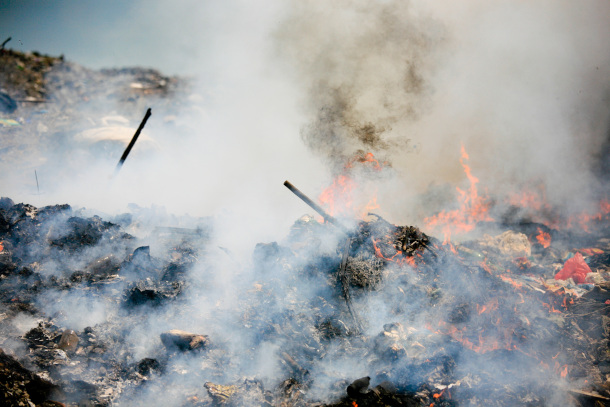
When plastic is burned, harmful chemicals are released as airborne pollution. (Photo: Alex Proimos, Flickr, CC BY-NC 2.0)
WINTERS: I think these updated numbers can serve as a sort of wake up call to policymakers. There's sort of a moral imperative here, I think. The numbers were already bad, but showing that they're even worse? I don't know, I think it can add fuel to the fire for people who are saying that this is, you know, waste colonialism. The developing world shouldn't bear the brunt of wealthy countries' large and growing appetite for plastic products.
DOERING: Joseph Winters is a reporter for Grist and a former Living on Earth intern. Thank you so much, Joseph.
WINTERS: Thanks, Jenny.
Related links:
- Grist | “Rich Countries Export Twice As Much Plastic Waste To The Developing World As Previously Thought”
- IPEN | “Plastic Waste Trade: The Hidden Numbers”
- UN Statistics Division | “HS, 2017 - Code 39”
[MUSIC: Manu Chao, “Bongo Bong” on World Playground, by Manu Chao, Putumayo (originally on Ark 21)]
O’NEILL: Coming up – The largest dam removal in US history is underway on the Klamath River and locals are working to bring the once flooded land back to life with native plants. Keep listening to Living on Earth.
ANNOUNCER: Support for Living on Earth comes from Friends of Smeagull the Seagull and Smeagull’s Guide to Wildlife. It’s all about the wildlife right next door to you! That’s Smeagull, S - M - E - A - G - U - L - L, SmeagullGuide.org.
[CUTAWAY MUSIC: Paula Fuga, “Nose Flute Dub” on Lilikoi, by Paula Fuga, Pakipika Productions]
Beyond the Headlines
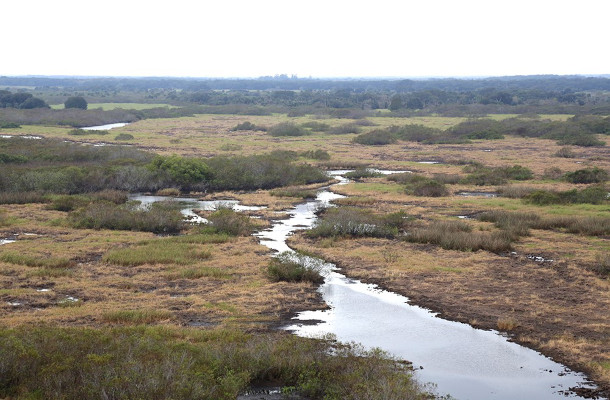
The Kissimmee River Restoration project has helped restore more than 40 square miles of the Florida river’s ecosystem. (Photo: South Florida Water Management District, Flickr, CC BY-ND 2.0)
DOERING: It’s Living on Earth, I’m Jenni Doering.
O”NEILL: And I’m Aynsley O’Neill
It's time now for a look beyond the headlines with Peter Dykstra our living on Earth contributor. Peter joins us from Atlanta, Georgia. Hey, Peter, what do you have for us this week?
DYKSTRA: Kind of a weird good news story out there about something that our tax dollars paid for that turned out to be no good. And then our tax dollars paid to fix it, talking about the Kissimmee River in Florida, sort of the heart and the start of the Florida Everglades. Back starting in the 1940s, there was a push by cattle ranchers and citrus farmers who are taking up more and more lands in Central Florida to have some flood control on the Kissimmee. And so the Army Corps of Engineers took all the bends of the slow moving river, put it in a culvert that was as much as 30 feet deep so that water would race through the area north of Lake Okeechobee instead of slowing down and flooding all this prime farm and grazing land.
O'NEILL: Alright, so that was the first step of our tax dollars at work and what was the second step?
DYKSTRA: The case was made that it was ecologically damaging to much of Florida's ecosystem, particularly the Everglades. And so a court ordered that the bends be put back in the river and that the Kissimmee river be returned as much as possible to its original condition. And there's been a wonderful if somewhat costly restoration project. What's happened is the ecosystem has been restored. It's estimated that taxpayers have contributed a billion dollars or more in the process of doing the damage and undoing it.

According to new research, an increase in home runs in Major League Baseball games could be attributed to warming which makes the air less dense so baseballs can travel farther. (Photo: Josh Hemsley, Unsplash)
O'NEILL: Alright, Peter, what else do you have for us today?
DYKSTRA: There's a study that came out last week in the Bulletin of the American Meteorological Society analyzed 100,000 Major League games, and attributed over 500 home runs increase in the last decade to warming caused by climate change. That's about a 1% jump, did have a guy Aaron judge who hit 62 homeruns, an American League record.
O'NEILL: Wow, that's a lot of homeruns. How did the study explain the correlation between these home runs and climate change?
DYKSTRA: This new study says that because warmer air is less dense than cooler air, as the air warms, there will be a few additional homeruns attributable to global warming.
O'NEILL: Well, I guess baseball fans should expect more home runs this season. But what I'm expecting from you now Peter is a trip through the history books. And I believe you have something from our home state of New Jersey.

On April 17, 1799, Aaron Burr founded The Manhattan Company to provide fresh water to New York City amidst a widespread yellow fever epidemic. That company has since evolved into J.P. Morgan Chase. (Photo: John Vanderlyn, Wikimedia Commons, public domain)
DYKSTRA: Well, we're both from Jersey, and one of the most famous people from Jersey is our history subject today because on April 17 1799, Aaron Burr born in Newark, and some of his colleagues launched the Manhattan company. It was the first New York City water utility. Now Aaron Burr, who of course was also an early Vice President had been developing a rivalry with another banker named Alexander Hamilton and his Bank of New York. And within five years, Burr went from founding the water company to being vice president to shooting Hamilton in a duel in Weehawken, New Jersey. He's the only vice president to ever successfully win a duel.
O'NEILL: Well, Peter, I always appreciate your New Jersey stories. Peter Dykstra is a living on Earth contributor. Thank you again and we'll talk to you soon.
DYKSTRA: All right, Aynsley. Thanks. Talk to you soon.
O'NEILL: And there's more on these stories on the living on Earth website. That's loe dot org.
Related links:
- National Geographic “Deep in Florida, an ‘ecological disaster’ has been reversed—and wildlife is thriving”
- Smithsonian “Climate Change Is Making Home Runs Easier to Hit”
- Museum of American Finance “Dirty Water”
[MUSIC: Sonny Osborne, “America the Beautiful” on Ultimate Banjo: The Best of Instrumental Banjo, music by Samuel A. Ward/Lyrics by Catherine Lee Bates, Pinecastle Records]
Revving Up U.S. EV Manufacturing
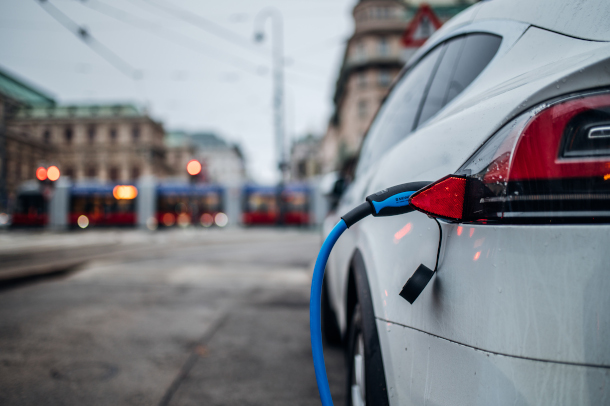
The Biden Administration has set a goal for 50% of vehicles sold in 2030 to be zero-emissions vehicles. (Photo: Ivan Radic, Flickr CC BY 2.0)
DOERING: President Biden has set an ambitious goal that 50% of all new vehicles sold in the US should be electric by the year 2030. But that goal might be tough to meet as a recent poll says just 4 in 10 Americans are somewhat likely to buy an electric vehicle as their next car. To encourage buyers and make EVs more affordable, the federal government offers a $7,500 tax credit but only for vehicles that meet certain standards. And now those standards are getting a lot tighter. 40 percent of the minerals must come from the United States or a country that has a free trade agreement with the US and final assembly must take place in North America. For more on gearing up for electric vehicles I’m joined now by Jim Motavalli, who writes about green transportation for Autoweek and Barrons. Welcome back to Living on Earth, Jim!
MOTAVALLI: It's great to be on.
DOERING: So what are some of these restrictions that determine whether or not an electric vehicle is actually qualified for the $7,500 federal tax credit?
MOTAVALLI: Well, what we had under the old rules, any automaker that manufactured an EV could pretty much qualify. So the only thing that got you out of qualifying was if you produced more than 200,000 cars. And this is why both General Motors and Tesla no longer qualified for the tax credit under the old rules. So cars made in Germany or Korea or even China could qualify for it. And if you're big on saying that we should only be subsidizing American made products, or vehicles with a lot of U.S. content, then that kind of rankles. So the new rules very much look at where the car is what they call final assembled. And whether that's in North America or not. So there are multiple things you have to do to qualify, and the consumer has to do a bunch of things. Like, you can't have income above a certain limit. And the car also has to be at certain price points for a car, it's not over $55,000. And for an SUV or a truck, it's $80,000. I think the most important point here, and you have to give Joe Manchin, the senator from West Virginia credit for this, it has spurred enormous investment in the United States in the form of both car plants and battery plants, and also the search for and mining of minerals and their recycling. So in terms of investment in America, that law has had a major positive effect. But it has also caused a lot of trade problems. And the companies that are not eligible are squawking about it quite a bit to foreign diplomats, American diplomats, and they want a piece of that pie.
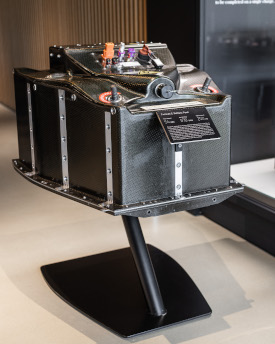
An electric battery pack used in Formula E racing, a kind of electric-only motorsport. One of the new EV tax credit qualifications concerns how much of the vehicle’s battery components have been manufactured or assembled in North America. (Photo: Automotive Rhythms, Flickr, CC BY-NC-ND 2.0)
DOERING: So what manufacturers are going to be left out of this tax credit once these restrictions take place?
MOTAVALLI: Well, it's still in flux. The biggest pain point right now is that the Hyundai Kia, they're made in Korea, they're not made in the United States. But the company is prepared to do $10 billion worth of investments in the United States. And the car that they just announced at the New York Auto Show, the EV9 is going to be built in Georgia. So all this is changing. We do have a list of the manufacturers that definitely qualify. And I would say that at this point, most of them do. I was able to find it online. In fact, the IRS has a list of them. So you know Audi, BMW, Ford, and most of the things that GM makes, all the Nissan LEAFs, pretty much everything made by Tesla. Like I said, it's in flux, you know, they're still working on it. They're gonna do everything they can to make sure that their vehicles are eligible, including spending billions of dollars in the US to build battery and car plants, which is what we're seeing now.
DOERING: So to what extent are these new restrictions going to create some winners and some losers in the EV market?
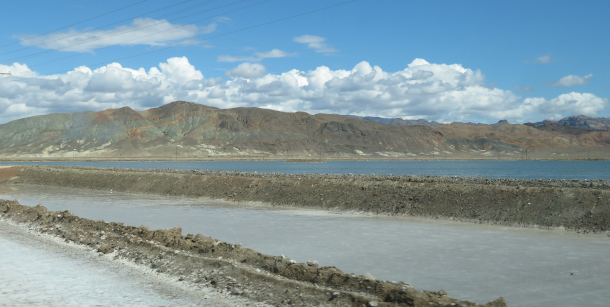
Silver Peak Lithium Mine in Nevada is one of few lithium mines in the United States. In 2020, Australia, China, and Latin America accounted for around 98% of all lithium production. (Photo: Ken Lund, Flickr, CC BY-SA 2.0)
MOTAVALLI: Well, I think the winner is going to be the consumer, really. I think that the companies that don't comply, like say, don't currently comply like Hyundai Kia, they're going to comply by building factories and battery capacity in the United States. That's already true of Kia Hyundai, so if their 2023 model doesn't qualify, their 2024 will probably get under the wire. So then the consumer gets a cheaper vehicle, both because the manufacturers are lowering their price to meet the limits. And because they qualify for the income tax credit. So it's kind of a win-win for the consumer. It's a lot of pain for the automakers, because their tendency is to build plants where it's cheapest to build, you know, it's cheaper to build cars in China, or Korea. But if you look at say lithium sourcing for the United States, it's the critical ingredient in electric vehicle batteries, pretty much all of them. We had practically no lithium mining or processing in the United States. Until now. Now we have a whole bunch of lithium mines opening as well as lithium processing which was almost entirely in China until now.
DOERING: It seems like changing up the structure of a global supply chain and getting the permits for new lithium mines, getting the permitting for new EV manufacturing plants, those things always seem to take a long time. Years. But how fast do you think these manufacturers will actually be able to meet these standards?
MOTAVALLI: Well, that's a good point you're making. Yes, it takes a very long time to qualify a new lithium or cobalt mine. But right now something, 70% of all the cobalt that we use in electric vehicle batteries comes from the Democratic Republic of the Congo, which has major child labor and working condition issues. So having a source of these things in the US or in North America generally is a very good thing. So permitting the new mines takes a long time, reclaiming those materials from used EV batteries, that takes less time. And another thing that I've just done a big story about is a number of companies opening that are doing recycling of these important minerals, especially including lithium, but also cobalt, nickel, copper, all those things that are in the batteries.
DOERING: Yeah. How hard is it to recycle those rare earth minerals from these batteries?
MOTAVALLI: It's not that hard. They have a process for doing it. One of the big companies is Redwood, which is headed by the former Chief Technology Officer at Tesla, JB Straubel, and they are doing you know, I think it's over 90% of the minerals in the battery.
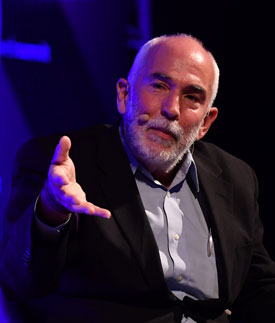
Jim Motavalli is a freelance environmental journalist and blogger for Autoweek and Barrons (Photo: Seb Daly, Web Summit, Wikimedia Commons, CC BY 2.0)
DOERING: So the Biden administration has actually just unveiled a new timeline, a new track for much stricter limits on vehicle emissions. What do you see in terms of the changes that are coming for the electric vehicle and overall auto market in the US?
MOTAVALLI: Well, the standards are very tough. Biden basically set a very high bar, he really wants the auto industry to pivot to electrification. The automakers say they're totally congruent with that, they've all said they're pivoting to electrification anyway. But they hate regulation. So they don't like being told they have to do it on a certain timetable. But you know, climate change is extremely ruthless. The IPCC, which is the international climate change body just put out a report that is very dire in terms of the effects of climate change and global warming. So there is a certain urgency to this. But I think we're gonna see a lot of automaker lobbying against the rules to try to water them down during the public comment period, which I think is like 30 to 45 days, something like that. And you're also going to see green groups, environmental groups, trying to make sure that they don't water them down. But you know, it's going to be hard for automakers to meet this as, right now, electric vehicle sales are about 5.8% of the market. And we're looking to, you know, get it just a few years, over half of all the vehicles sold. So, yes, it's a big ramp up. And it's asking a lot of consumers and automakers.
DOERING: Jim Motavalli is a blogger with Barrons and AutoWeek. Jim, thanks so much for taking the time with us today.
MOTAVALLI: Great, always fun to be on.
Related links:
- The New York Times | “New Rules Will Make Many Electric Cars Ineligible for Tax Credits”
- Barrons | “Bigger is Better for EVs at the New York International Auto Show”
- Read more about which EVs qualify for the tax credit at the IRS website
[MUSIC: Lucinda Williams, “Over Time” on Artist’s Choice-Elvis Costello: Music That Matters To Him, by Lucinda Williams, Hear Music/Universal Music]
Replanting The Klamath River

Yurok tribal member and Fish Technician 1 Frank Henry Jr. works alongside Iron Gate Reservoir in Feb. 2023. The reservoir will be drained when Iron Gate Dam is removed as part of the Klamath River restoration. (Photo: Juliet Grable / JPR)
O’NEILL: The Klamath River meanders more than 250 miles along the California Oregon border. And right now, the river is the site of the largest dam removal project in US history. Four dams are being torn down with the goal to have them out completely by the end of 2024. The reservoirs behind the dams will be drained and the river will run free for the first time in a century. That means land that has been submerged all this time will suddenly be exposed. As Juliet Grable from Jefferson Public Radio reports, an effort is underway to replant the area with native species.
GRABLE: On the north shore of Iron Gate reservoir, Frank Henry Jr. jams a heavy metal pole into the ground and twists
[SFX]
HENRY: So I'm digging like maybe a 12, 13 inch hole with the rock bar.
GRABLE: He grabs a stick from a five gallon bucket and plants it in the hole. It's Klamath plum.
HENRY: These little ones that are kind of like cluttered together are the ones I'm putting in right now.
GRABLE: It will eventually grow into a shrubby tree that forms dense thickets. Henry is part of a crew contracted by resource environmental solutions or RES to restore the banks of the Klamath River after four dams come out. About 900 acres of wet mud will be exposed around Iron Gate reservoir, which is in Siskiyou County. Joshua Chenoweth is the Senior Riparian Ecologist for California's Yurok tribe. He's leading the dam replanting effort.
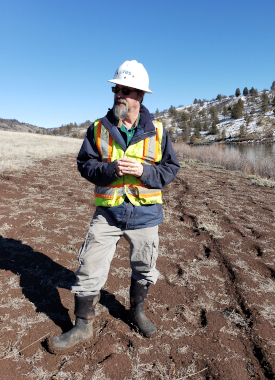
Joshua Chenoweth, senior riparian ecologist for the Yurok Tribe, is leading the replanting effort around Iron Gate Reservoir. (Photo: Juliet Grable / JPR)
CHENOWETH: It's our job to make sure it's revegetated and we want that to be revegetated with a healthy native plant ecosystem.
GRABLE: For the last two years Chenoweth's crew has been mowing a wide ribbon around the shoreline to keep out exotic invasive plants. Last fall, they seeded the strip with a mix of native species. Now they're installing young shrubs and trees, buckbrush and serviceberry along with the Klamath plum. Chenoweth is not a tribal member but nearly all his field technicians are either members of the Yurok tribe, like Henry, or the Karuk tribe.
CHENOWETH: Any revegetation project, if it's done right is adaptively managed by people that understand the landscape and there's no better place to look for that than the tribes and the people that live here and call home.
GRABLE: The revegetation of the Klamath River has been called the biggest river restoration project in American history. Collecting, propagating and growing enough seeds and plants to repopulate the reservoir footprints, approximately twenty-two hundred acres and all is a staggering task. Their planting design includes ninety-six different species, culturally significant plants like yampah and lomatium, important pollinator species like milkweed and tens of thousands of oak trees. Gwen Santos is the regulatory and ecology director for RES. She's been coordinating the revegetation effort.
SANTOS: We're up to 13 billion seeds, approximately, we're trying to get to 17 to 19 billion.
A field of Oregon sunshine being grown for the Klamath River restoration at BFI Native Seeds in Washington State. (Photo: Matt Benson / Resource Environmental Solutions)
GRABLE: There's no way to collect enough wild seeds to meet these targets. So RES has contracted with five commercial nurseries to propagate wild plants specifically for their seed, a process called seed amplification. Washington based BFI Native Seeds is one of the contracted nurseries. They have the challenging task of scaling up a small number of wild seeds into hundreds of pounds for this project. BFI's manager Matt Benson says, these native seeds haven't been bred as crops.
BENSON: We think very well, go plant the garden that does it and you don't realize oh, yeah, there's 6000 years of agriculture behind every seed I plant and I put in a garden or when a farmer plants a field, when we don't have any of that.
GRABLE: BFI is located near Moses Lake in Central Washington. Benson is growing 20 different native species, some of which have yielded surprises, like a field of mugwort, which started out as tiny tufts with gray green leaves.
BENSON: I mean, in one year, it shot up almost like corn does.
GRABLE: Benson had to keep raising his sprinklers to accommodate the plants, which eventually towered over 10 feet and produced huge masses of flowers. Joshua Chenoweth also helped lead the revegetation effort on what was previously the largest dam removal in the world. The removal of two dams on the Elwha River in Washington State. After the Yurok tribe toured the Elwha site, they recruited Chenoweth for the Klamath River Project. He says the pull to lead another project like this, on an even larger scale proved too hard to resist.
CHENOWETH: It was a whole new landscape to learn about and try to apply lessons learned to a new project and advance the science of revegetating reservoirs after a dam removal project.
GRABLE: But despite the monumental effort and dozens of species being cultivated, and he says, nature will still do most of the work.
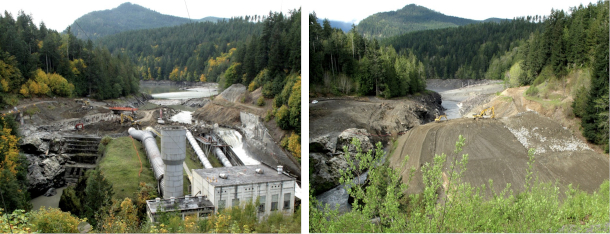
Left: Elwha Dam removal work on October 20, 2011. Right: Former Elwha Dam site on May 1, 2012. (Photo: National Park Service)
CHENOWETH: We're trying to introduce as greater diversity as possible and then let the landscape teach us what's going to grow and work well.
GRABLE: RES will be actively planting the reservoirs for two years, then we'll maintain and monitor the sites for another five years. I'm Juliette Grable reporting.
O’NEILL: Juliet’s story comes to us courtesy of Jefferson Public Radio.
[MUSIC: Hot Club Sandwich, “Lily’s Bolero” on No Pressure, by Matt Sireely, self-published]
DOERING: On the next Living on Earth, Earth Day and a celebration of our only home.
PIERCE: Part of celebrating the Earth is finding a way to let ourselves experience the joy of this planet and all of its wonders, even as we’re aware of the crisis that it’s in.
DOERING: We’ll honor the earth with music, poetry and more next week on Living on Earth.
Related links:
- Find the written version of this story on Oregon Public Broadcasting
- From the Living on Earth archives: “Rafting Down the Unbound Elwha”
[MUSIC: Hot Club Sandwich, “Lily’s Bolero” on No Pressure, by Matt Sireely, self-published]
DOERING: Living on Earth is produced by the World Media Foundation. Our crew includes Fern Alling, Naomi Arenberg, Bobby Bascomb, Paloma Beltran, Iris Chen, Josh Croom, Swayam Gagneja, Mark Kausch, Mark Seth Lender, Don Lyman, Jusneel Mahal, Louis Mallison, Sophia Pandelidis, Jake Rego, El Wilson, and Jolanda Omari.
O’NEILL: Tom Tiger engineered our show. Alison Lirish Dean composed our themes. Special thanks to Clean Up Kenya. You can hear us anytime at L-O-E dot org, Apple Podcasts and Google Podcasts, and like us, please, on our Facebook page - Living on Earth. We tweet from @livingonearth. And find us on Instagram at livingonearthradio. And you can write to us at comments at loe dot org. Steve Curwood is our Executive Producer. I’m Aynsley O’Neill.
DOERING: And I’m Jenni Doering, Thanks for listening!
ANNOUNCER: Funding for Living on Earth comes from you, our listeners, and from the University of Massachusetts, Boston, in association with its School for the Environment, developing the next generation of environmental leaders. And from the Grantham Foundation for the protection of the environment, supporting strategic communications and collaboration in solving the world’s most pressing environmental problems.
ANNOUNCER 2: PRX.
Living on Earth wants to hear from you!
Living on Earth
62 Calef Highway, Suite 212
Lee, NH 03861
Telephone: 617-287-4121
E-mail: comments@loe.org
Newsletter [Click here]
Donate to Living on Earth!
Living on Earth is an independent media program and relies entirely on contributions from listeners and institutions supporting public service. Please donate now to preserve an independent environmental voice.
NewsletterLiving on Earth offers a weekly delivery of the show's rundown to your mailbox. Sign up for our newsletter today!
 Sailors For The Sea: Be the change you want to sea.
Sailors For The Sea: Be the change you want to sea.
 The Grantham Foundation for the Protection of the Environment: Committed to protecting and improving the health of the global environment.
The Grantham Foundation for the Protection of the Environment: Committed to protecting and improving the health of the global environment.
 Contribute to Living on Earth and receive, as our gift to you, an archival print of one of Mark Seth Lender's extraordinary wildlife photographs. Follow the link to see Mark's current collection of photographs.
Contribute to Living on Earth and receive, as our gift to you, an archival print of one of Mark Seth Lender's extraordinary wildlife photographs. Follow the link to see Mark's current collection of photographs.
 Buy a signed copy of Mark Seth Lender's book Smeagull the Seagull & support Living on Earth
Buy a signed copy of Mark Seth Lender's book Smeagull the Seagull & support Living on Earth

